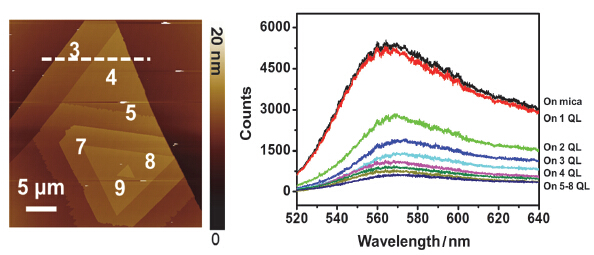| [1] Castro Neto, A. H.; Guinea, F.; Peres, N. M. R.; Novoselov, K. S.; Geim, A. K. Rev. Mod. Phys. 2009, 81, 109.
[2] Liu, Z. F. Acta Chim. Sinica 2014, 72, 267. (刘忠范, 化学学报, 2014, 72, 267.)
[3] Qi, X. L.; Zhang, S. C. Rev. Mod. Phys. 2011, 83, DOI: 10.1103/ RevModPhys.83.1057.
[4] Xie, L. M.; Ling, X.; Fang, Y.; Zhang, J.; Liu, Z. F. J. Am. Chem. Soc. 2009, 131, 9890.
[5] Kim, J.; Cote, L. J.; Kim, F.; Huang, J. J. Am. Chem. Soc. 2010, 132, 260.
[6] Chen, Z. Y.; Berciaud, S.; Nuckolls, C.; Heinz, T. F.; Brus, L. E. ACS Nano 2010, 4, 2964.
[7] Ghaemi, P.; Mong, R. S. K.; Moore, J. E. Phys. Rev. Lett. 2010, 105, 166603.
[8] Sun, Y.; Cheng, H.; Gao, S.; Liu, Q.; Sun, Z.; Xiao, C.; Wu, C.; Wei, S.; Xie, Y. J. Am. Chem. Soc. 2012, 134, 20294.
[9] Xia, Y.; Qian, D.; Hsieh, D.; Wray, L.; Pal, A.; Lin, H.; Bansil, A.; Grauer, D.; Hor, Y. S.; Cava, R. J.; Hasan, M. Z. Nat. Phys. 2009, 5, 398.
[10] Zhang, H. J.; Liu, C. X.; Qi, X. L.; Dai, X.; Fang, Z.; Zhang, S. C. Nat. Phys. 2009, 5, 438.
[11] Zhang, G. H.; Qin, H. J.; Teng, J.; Guo, J. D.; Guo, Q. L.; Dai, X.; Fang, Z.; Wu, K. H. Appl. Phys. Lett. 2009, 95, 053114.
[12] Peng, H. L.; Dang, W. H.; Cao, J.; Chen, Y. L.; Wu, W.; Zheng, W. S.; Li, H.; Shen, Z. X.; Liu, Z. F. Nat. Chem. 2012, 4, 281.
[13] Li, H.; Cao, J.; Zheng, W. S.; Chen, Y. L.; Wu, D.; Dang, W. H.; Wang, K.; Peng, H. L.; Liu, Z. F. J. Am. Chem. Soc. 2012, 134, 6132.
[14] Zhao, S.; Wang, H.; Zhou, Y.; Liao, L.; Jiang, Y.; Yang, X.; Chen, G.; Lin, M.; Wang, Y.; Peng, H.; Liu, Z. Nano Res. 2015, 8, 288.
[15] Dong, H. F.; Gao, W. C.; Yan, F.; Ji, H. X.; Ju, H. X. Anal. Chem. 2010, 82, 5511.
[16] Swathi, R. S.; Sebastian, K. L. J. Chem. Phys. 2008, 129, 054703.
[17] Wang, Y. L.; Lu, J. P.; Tong, Z. F.; Chen, L. Acta Chim. Sinica 2009, 67, 2222. (王益林, 陆建平, 童张法, 陈璐, 化学学报, 2009, 67, 2222.)
[18] Wu, P. G.; Brand, L. Anal. Biochem. 1994, 218, 1.
[19] Clegg, R. M. Curr. Opin. Biotechnol. 1995, 6, 103.
[20] Selvin, P. R. Biochem. Spectrosc. 1995, 246, 300.
[21] Yao, J.; Koski, K. J.; Luo, W. D.; Cha, J. J.; Hu, L. B.; Kong, D. S.; Narasimhan, V. K.; Huo, K. F.; Cui, Y. Nat. Commun. 2014, 5, 5670. |
